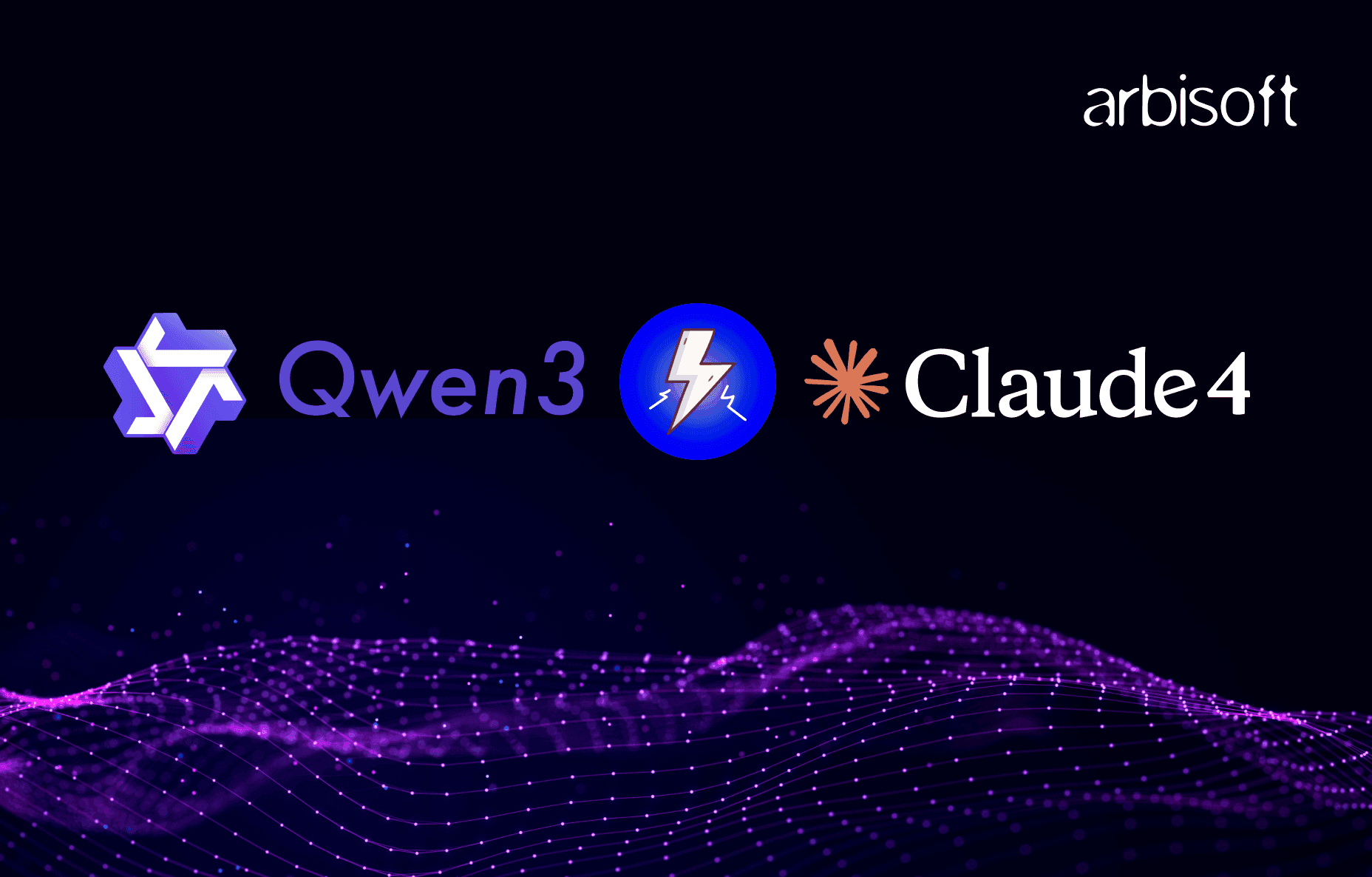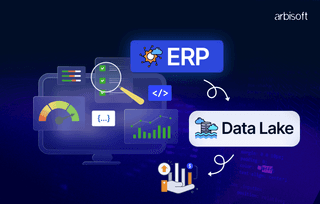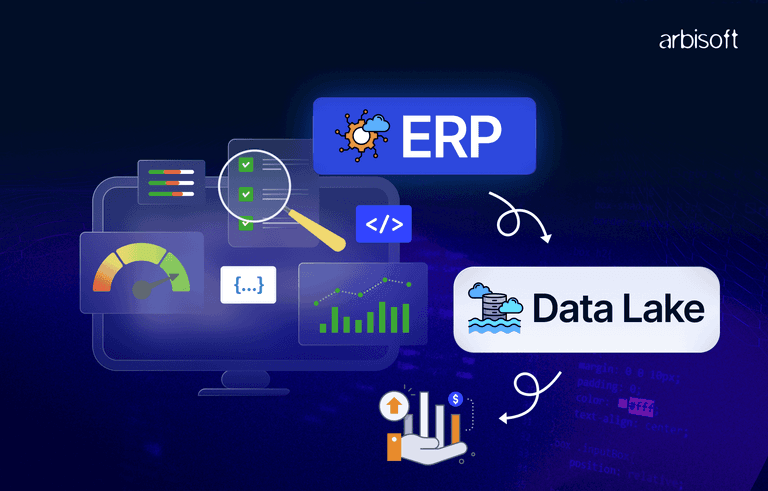We put excellence, value and quality above all - and it shows




A Technology Partnership That Goes Beyond Code

“Arbisoft has been my most trusted technology partner for now over 15 years. Arbisoft has very unique methods of recruiting and training, and the results demonstrate that. They have great teams, great positive attitudes and great communication.”
Inside Alibaba’s Qwen3 AI Models: How They Compare to Claude Opus 4

Almost every week, a new AI model is launched with big promises: better reasoning, faster output, smarter code, or stronger multilingual abilities. But most of them follow a familiar pattern, slightly improved benchmark scores, a different name, and another spot on the leaderboard.
Alibaba’s July 2025 release breaks that pattern. In one release, Alibaba launched a new set of open-source language models that quickly made an impact in the global AI space. The most important one is Qwen3-235B-A22B-Instruct-2507, a powerful model that not only competes with but sometimes outperforms Anthropic’s Claude Opus 4. Along with it, Alibaba introduced Qwen3-Coder-480B-A35B-Instruct, a large model focused on code and agent-style behavior.
Both models are already moving up on the Hugging Face Open LLM Leaderboard and are getting a lot of attention in AI communities. Let’s take a closer look at what they offer, how they compare to Claude, and what people in the field are saying.
Alibaba Qwen3-235B: Big, Smart, and Efficient
This model is designed for general-purpose use and excels at understanding and following instructions. It has 235 billion total parameters and uses a Mixture-of-Experts (MoE) system. Out of 128 total experts, only 8 are active during any single run, which means 22 billion active parameters are used at a time.
What really makes this model special is how well it balances size and efficiency. It supports long context windows, up to 262,144 tokens, which is perfect for long-form reasoning, document analysis, and complex multi-step tasks.
Performance-wise, Qwen3-235B has shown solid results across many areas: instruction following, understanding different languages, math reasoning, and even coding. The benchmarks show this clearly:
| Benchmark/Test | Qwen3-235B-A22B-Instruct-2507 | Qwen3-235B-A22B-Thinking-2507 | Claude Opus 4 |
| MMLU (General Knowledge) | ~83.0% | — | ~87–89% |
| GPQA (Graduate QA) | 77.5% | 81.1% | ~79.6% → ~83% (thinking mode) |
| AIME25 (Reasoning) | ~70.3% | 92.3% | ~75% (with thinking mode) |
| LiveCodeBench v6 (Coding) | 51.8% | 74.1% | ~72–73% (estimated) |
| Arena-Hard v2 (Alignment) | 79.2% | 79.7% | Not reported |
| Thinking Mode | Not included | Yes | Yes |
| Open Source | Yes | Yes | No |
| Context Length | 262K tokens | 262K tokens | 200K tokens |
These results put it very close to Claude Opus 4 and ahead of many open-source models, especially for advanced reasoning and language understanding.
Alibaba Qwen3-Coder-480B: A Powerful Model for Code
Just two days later, Alibaba released Qwen3-Coder, a model made for coding tasks, like generating code, fixing bugs, using tools, and completing complex software workflows.
It’s a much bigger model, with 480 billion total parameters and 160 experts. Like the other model, it activates only 8 experts per run, resulting in 35 billion active parameters at a time. This makes it surprisingly efficient, despite its large size.
Qwen3-Coder also handles very long context windows, with built-in support for 256K tokens, and it can scale up to 1 million tokens. This allows it to process entire codebases, long logs, or documentation in one go.
Its performance also stands out. On SWE-bench Verified, a benchmark that tests how well models fix real-world software bugs over 100+ steps, it scored around 67%. That puts it on par with Claude Sonnet and ahead of many other models, such as DeepSeek-V2 and Kimi K2.
How Do These Models Compare to Claude and Other Top Models?
Perhaps the standout feature of Alibaba’s new models is that they’re open source, while performing just as well (if not better) than Claude.
Models like Claude Opus and Claude Sonnet are closed-source and can only be used through APIs. That limits how much developers or researchers can customize or run them independently. In contrast, Qwen3 models are open-weight, which means anyone can host them, modify them, and use them freely.
Here’s how they stack up:
- As discussed above, Qwen3-235B-A22B performs as well as or better than Claude Opus in:
- MMLU-Redux
- Long-context tasks
- Math and reasoning
- Qwen3-Coder performs almost exactly like Claude Sonnet on real-world programming benchmarks, and is available for full access.
These results aren’t just numbers; they matter to developers. For anyone building AI-powered apps or tools, these models offer high capability with fewer restrictions.
Why Every New Model Claims to Be the Best
It’s common for every new AI model to say it’s the best. That’s because the race is intense, models are constantly trying to show higher scores, longer context windows, or faster speeds.
But small gains, like 1% on MMLU or a few points on GSM8K, don’t always lead to noticeable improvements in real-world use. What matters more is:
- How well a model aligns with user input
- How much context can it handle
- Whether it works well with AI agents
- And how flexible it is across different tasks
That’s where models like Qwen3-235B and Qwen3-Coder stand out. They aren’t just growing in size, they’re designed for balanced performance, lower computing costs, and agent-friendly behavior, especially in the case of the coding model.
While Qwen3 is making headlines today, it’s part of a broader wave of next-gen Chinese AI models reshaping the global AI race from Kimi K1.5 to Manus AI, explore how China is setting the pace.
Is Alibaba Catching Up in the Global AI Race?
Even though Alibaba is releasing some of the best models out there, it's still not a widely recognized name in the AI industry. Here’s why:
- Geopolitical factors make it harder for Alibaba to form commercial partnerships in the US and Europe, which are the established playgrounds for the biggest names in the space.
- Its models are often released first in Chinese-language platforms, which delays attention from English-speaking users.
- Media attention tends to focus more on companies like OpenAI, Google DeepMind, or Anthropic who are established players in this space.
Still, things are changing. Since the July release, Qwen3 models have gained momentum globally. They’ve seen rising GitHub stars, more downloads on Hugging Face, and increasing mentions in research papers.
So even if Alibaba isn’t dominating headlines, it’s clearly making a real impact in the AI space.
The AI Race Is Shifting and It’s Not Just About Size Anymore
In 2023 and 2024, the AI race was all about size. Bigger models were assumed to be better. But in 2025, the trend has changed. The top-performing models now focus on a balance of power, speed, and flexibility.
The best models today:
- Work well across different languages
- Understand complex tasks deeply
- Support AI agents
- And can run locally when needed
Alibaba’s latest models meet all of these needs. They might not have the loudest marketing, but they’re earning developer trust and delivering strong technical results, reflecting the impact of advanced AI technology solutions. In the end, that’s what really matters, and it’s what the next stage of the AI race will be built on.
People Also Ask
1. What is Alibaba’s Qwen3-235B model and how does it work?
Alibaba’s Qwen3-235B is a powerful open-source AI language model with 235 billion parameters and a Mixture-of-Experts (MoE) design. Only 22 billion parameters are active per run, making it efficient and scalable. It supports a context length of 262,144 tokens and performs well on tasks like reasoning, multilingual understanding, and instruction following.
2. How does Qwen3-235B perform compared to Claude Opus 4?
Qwen3-235B matches or beats Claude Opus 4 in several benchmarks, including math reasoning (AIME25), graduate-level QA (GPQA), and long-context tasks. Although Claude leads slightly in MMLU, Alibaba’s model offers similar performance with the added advantage of being open source.
3. What is Alibaba Qwen3-Coder and what makes it good for developers?
Qwen3-Coder is Alibaba’s AI model built specifically for software development tasks such as code generation, debugging, and tool usage. It has 480 billion total parameters (35 billion active) and supports up to 1 million tokens of context, making it ideal for analyzing full codebases. It performs on par with Claude Sonnet on real-world coding benchmarks like SWE-bench.
4. Are Alibaba’s Qwen3 models open source and free to use?
Yes, both Qwen3-235B and Qwen3-Coder are open-source models. They are available on platforms like Hugging Face, allowing developers to download, fine-tune, host, and use them without API restrictions, unlike closed models like Claude, Gemini, or GPT.
5. Why are Alibaba’s Qwen3 AI models important in the 2025 AI race?
Alibaba’s Qwen3 models are significant because they challenge top-tier closed models while remaining open source. They offer high performance in reasoning, code, and long-context tasks, making them a strong choice for developers, researchers, and businesses. Their release reflects a shift toward efficient, flexible, and agent-ready AI solutions in 2025.
























